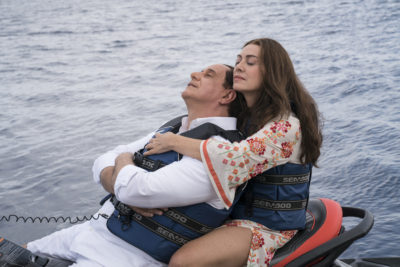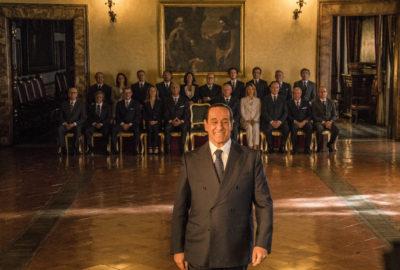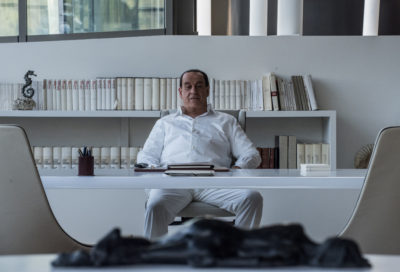ALWAYS IN SEASON Q&A’s following the 7:30 pm show on Friday, 9/29 – Sunday, 9/29. Details below.
CHASING EINSTEIN Q&A with Filmmakers at the Claremont.
CHASING EINSTEIN director Steve Brown and writer Eric Myerson will participate in a Q&A following the 7:30 pm show on Saturday, 9/28.
DON’T BE NICE Daily Q&A’s with Cast & Crew Starting 9/27 at the Glendale.
DON’T BE NICE Q&A’s with producer Nikhil Melnechuk and guests following the 7:20 pm show.
Friday: Composer Khari Mateen, EP Melina Brown, hosted by actress Meital Dohan
Saturday: Composer Khari Mateen, EP Melina Brown, hosted by filmmaker Jacques Thelemaque
Sunday: hosted by Film Threat’s Chris Gore
Tuesday: hosted by actress Karla Mosley
Wednesday: hosted by festival director Theo DuMont
Thursday: hosted by filmmaker James Costa
SISTER AIMEE Q&A’s with Cast & Crew Opening Weekend at the Glendale.
SISTER AIMEE Q&A’s following the 7:40 pm show with Anna Margaret, Bettina Barrow, Michael Mosley and moderated by Lily Rabe on Friday, 9/27; with Marie Schlingmann, Samantha Buck, Anna Margaret, Michael Mosley, Amy Hargreaves and moderated by Danielle DiGiacomo on Saturday, 9/28 and with Marie Schlingmann, Samantha Buck, Bettina Barrow; moderator TBD.
Paulo Sorrentino and Toni Servillo Conjure Berlusconi in LORO, Opening September 27 at the Royal and October 4 at the Playhouse, Claremont & Town Center.
Sex, drugs, power, and vice: welcome to the mid-2000s Italy of Silvio Berlusconi, the egomaniac billionaire Prime Minister who presides over an empire of scandal and corruption. Sergio (Riccardo Scamarcio) is an ambitious young hustler managing an escort service catering to the rich and powerful. Determined to move up in the world, Sergio sets his sights on the biggest client of all: Berlusconi (Toni Servillo), the disgraced, psychotically charming businessman and ex-PM currently plotting his political comeback. As Berlusconi attempts to bribe his way back to power, Sergio devises his own equally audacious scheme to win the mogul’s attention. Exploding with eye-popping, extravagantly surreal set-pieces, the dazzling, daring new film from Academy Award-winning director Paolo Sorrentino (The Great Beauty) is both a wickedly subversive satire and a furious elegy for a country crumbling while its leaders enrich themselves.
DIRECTOR’S STATEMENT:
Loro, a film in two parts, is a fictional story, a sort of costume drama, which narrates probable or invented facts that took place in Italy, between 2006 and 2010.
Using a variety of characters, Loro seeks to sketch, through glances or intuitions, a moment of history – now definitively closed – which, in a very synthetic vision of events, might be defined as amoral and decadent, but also extraordinarily vital.
And Them [Loro] also seeks to describe certain Italians, simultaneously new and old. Souls in an imaginary, modern purgatory who decide, on the basis of heterogeneous impulses such as ambition, admiration, love, self-interest, personal advantage, to try to revolve around a sort of paradise in flesh and blood: a man by the name of Silvio Berlusconi.

These Italians, to my eyes, contain a contradiction: they are predictable but indecipherable. A contradiction which is a mystery. An Italian mystery which the film tries to deal with, but without being judgmental. Inspired only by a desire to understand, and adopting a tone which today, rightly, is considered revolutionary: a tone of tenderness.
But here comes another Italian. Silvio Berlusconi. The way I imagined him.
The story of the man, above all, and only in a marginal way of the politician.
Someone might object that we know plenty not only about the politician, but also about the man.
I doubt that.

A man, as far as I am concerned, is the result of his feelings more than a biographical total of facts. Therefore, within this story, the choice of facts to be recounted does not follow a principle of relevance dictated by the news agenda of those days, but only tries to dig, groping in the dark, in the man’s conscience.
What, then, are the feelings that stimulated Silvio Berlusconi’s days in this period? What are the emotions, the fears, the delusions of this man in dealing with events that appear to loom like mountains? This, for me, is another mystery the film deals with.
Men of power in the generations before that of Berlusconi were other mysteries, because they were unapproachable. Remember there was a time when we spoke of the disembodiment of power.

Silvio Berlusconi, instead, is probably the first man of power to be an approachable mystery. He has always been a tireless narrator of himself: think, for example, of the picture story Una storia italiana that he had sent to everyone in Italy in 2001, and for this reason too he inevitably became a symbol. And symbols, unlike mere mortals, are public property. And therefore, in this sense, he also represents a part of all Italians.
But, naturally, Silvio Berlusconi is much more. And it is not easy to provide a synthesis. For this reason I have to appeal to a much better man than me: Hemingway.
In The Sun Also Rises, Hemingway writes: “Nobody ever lives their life all the way up except bullfighters.” Paraphrasing things, perhaps the most concise image we can have of Silvio Berlusconi is that of a bullfighter. ~ Paolo Sorrentino
IMPRISONED Q&A’s with Filmmaker Opening Weekend at the Music Hall.
IMPRISONED director/writer/producer Paul Kampf will participate in a Q&A following the 7:00 pm show on Friday, 9/20 and Saturday 9/27.
CRACKED UP Q&A’s with Cast & Crew Opening Weekend at the Monica Film Center.
CRACKED UP Q&A’s moderated by Trudy Goodman following the 7:20 pm show on Friday, 9/20 and Saturday, 9/21. Friday’s participants: Bonnie Greenberg with director Michelle Esrick, star Darrell Hammond, Macy Gray and Diane Warren. Saturday’s participants: Michelle Esrick and Darrell Hammond.
HEADING HOME: THE TALE OF TEAM ISRAEL Q&A with Zack Thornton at the Royal
HEADING HOME: THE TALE OF TEAM ISRAEL is a stirring story of sports, patriotism and personal growth, charting the underdog journey of Israel’s national baseball team competing for the first time in the World Baseball Classic.
After years of defeat, Team Israel is finally ranked among the world’s best in 2017, eligible to compete in the prestigious international tournament. Their line-up included several Jewish American Major League players―Ike Davis, Josh Zeid and ex-Braves catcher Ryan Lavarnway―most with a tenuous relationship to Judaism, let alone having ever set foot in Israel.
Their odyssey takes them from Tel Aviv and Jerusalem where they are greeted as heroes, to Seoul where they must debunk their has-been, wannabe reputations. With their Mensch on the Bench mascot by their side, the team laughs, cries, and does much soul-searching, discovering the pride of representing Israel on the world stage.
HEADING HOME: THE TALE OF TEAM ISRAEL Zack Thornton will participate in a Q&A following the 5:20 pm show and into the 7:45 pm show on Saturday, 9/14.
- « Previous Page
- 1
- …
- 49
- 50
- 51
- 52
- 53
- …
- 140
- Next Page »

